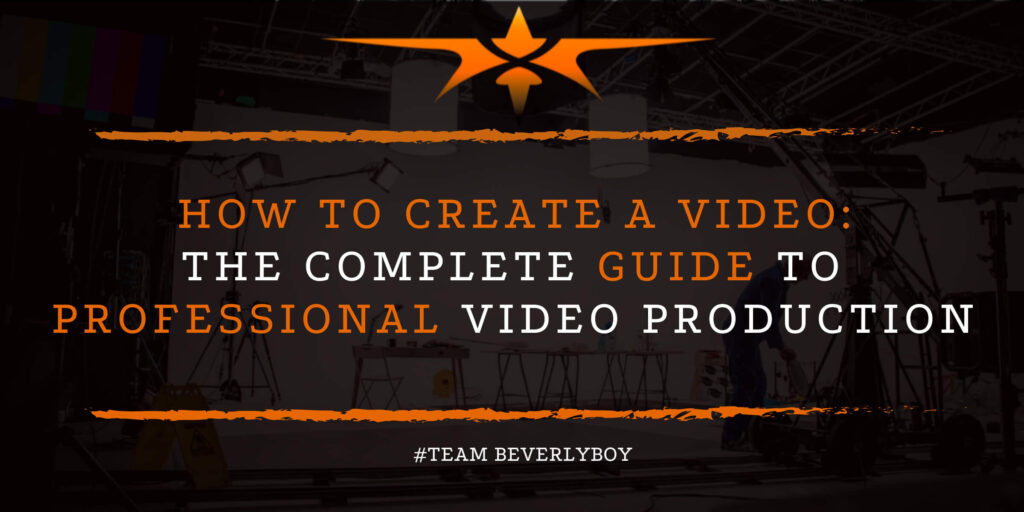How to Create a Video: The Complete Guide to Professional Video Production
Creating a video from scratch may sound like a big deal, largely because video production is a highly in-depth, labor-intense process that requires a lot of moving parts to come together for the finished product to truly pay off. Knowing how to create a video for your business represents a key component of your role as a marketer, sales professional, or individual business owner, and the benefits of having this knowledge are profound.
Professional video content that engages your audience and reflects positively on your brand is something that you absolutely must have, but it’s not necessarily easy to achieve.
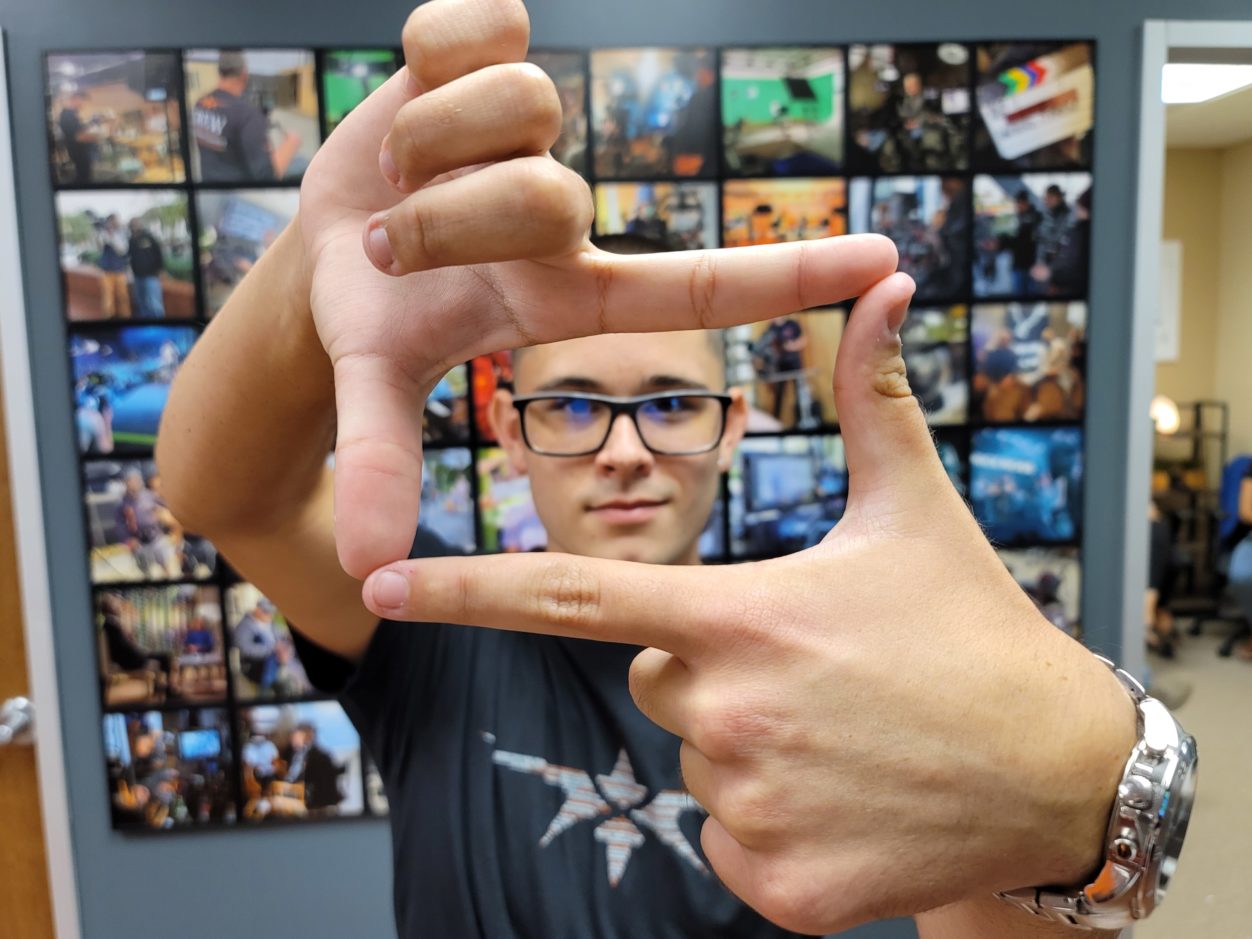
As we guide you through the individual steps of professional video production, you’ll soon see exactly what is required to begin producing powerful video content that will bring your brand to life. In fact, the entire video production process can be simplified and broken down into 3 very important steps:
Pre-production, which represents the planning phase of your video project and requires strategy and a time for scriptwriting, production which represents the time period in which your cast and crew work together on the film set to shoot the video, and post-production which involves the final editing and cleanup of your video to make it powerfully effective, engaging, and fun.
Get a quick quote now!
Pre-Production
The first step in any video production project is to begin the essential planning of your video. This is the time where you will actively engage in the process of outlining your project, the goals, and the purpose of your video content.
You should be answering the following questions about your video in the pre-production phase:
- What type of video will I create?
- Who is my target audience and what do I know about them?
- What type of resources will be required to produce the video?
- How long will the video take to produce?
Generally, pre-production represents the most time-consuming process of creating a video. This is simply because nothing can take the place of a well-planned strategy! Take your time upfront in handling all essential planning for your production and you’ll save time and money in the long run.
Producer’s Note: Planning is essential to your video production project. Failure to plan can lead to costly mistakes on the film set as well as costly changes in editing later on. Take your time, plan the process, and reap the rewards of video success in the long run.
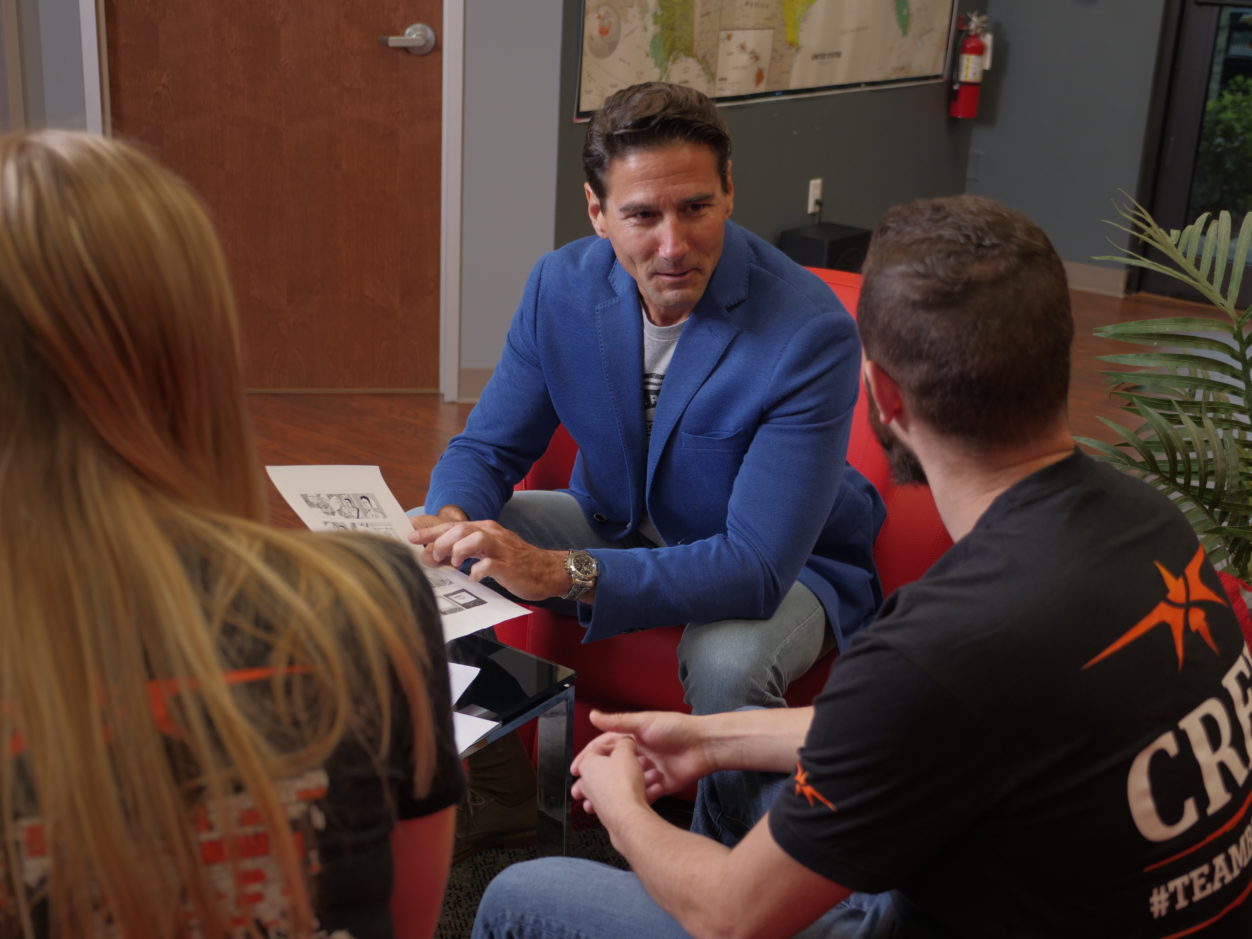
What Are my Video Objectives?
The video objectives should be something that comes up before you even enter the pre-production process. If you’re asking how to create a video, objectives should already be determined. Perhaps you decided that you need to create video content to add to your website and attract more leads? Or, you may have decided that you want to create a video that will help your audience connect with your brand ambassadors.
Whatever the purpose of your video is, the very first step is to start defining the objects:
- Why are you making this video?
- What do you expect to achieve with the video?
- Who is the video for?
- What will your audience gain from the video?
Aligning video goals and objectives with your own corporate goals and objectives from the very beginning is an excellent idea! At the bare minimum, from the very beginning, you want to have a goal in place for your video, and remember: Goals should be measurable and realistic.
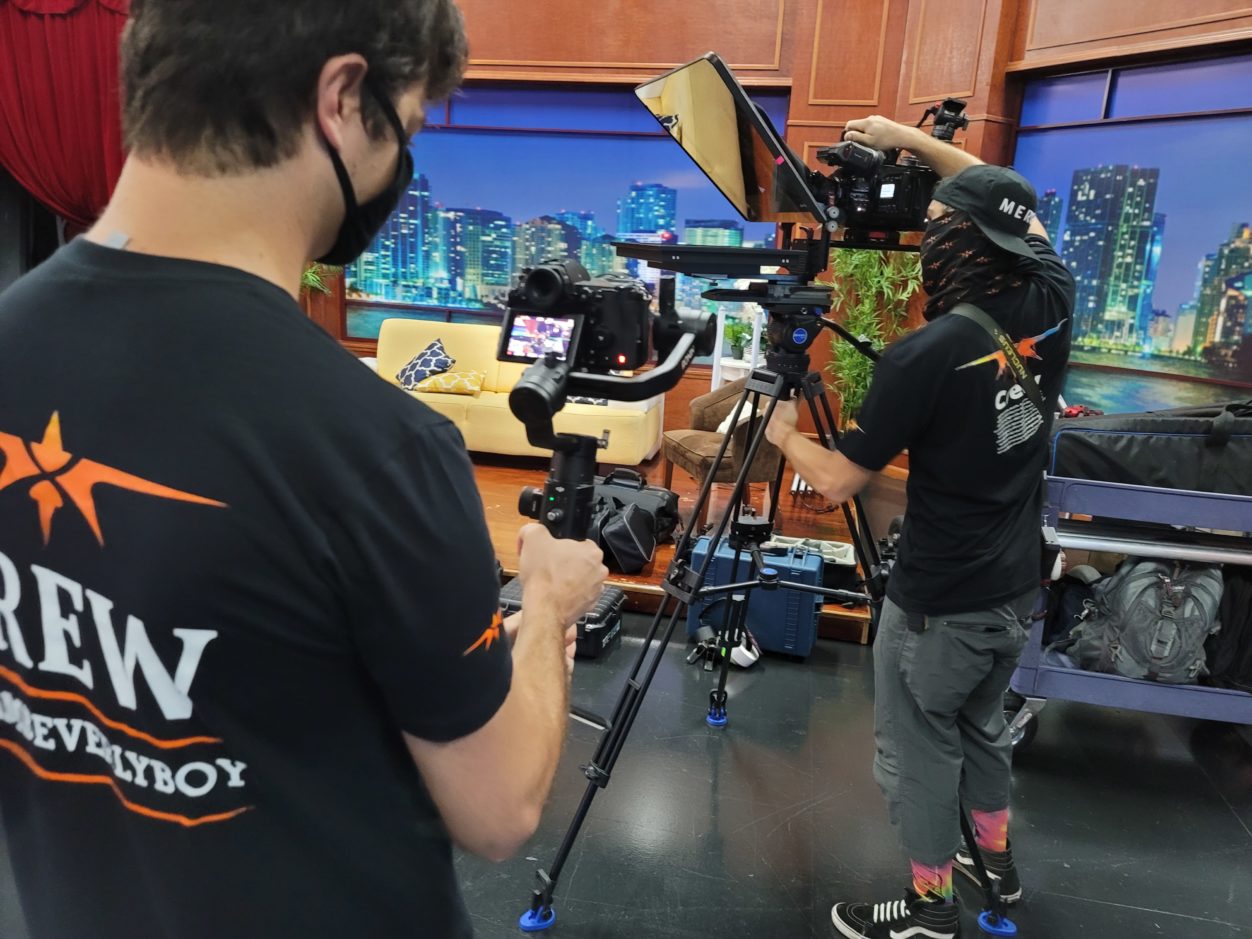
Consider the SMART goal setting process to ensure that your objectives align with the appropriate setting of goals.
The SMART methodology of goal setting states that goals should be:
- Specific
- Measurable
- Achievable
- Relevant
- Time-bound
For example, you might set a goal for your video to help your business generate 5% more sales of a specific product over the next 90 days. This would be a SMART goal IF realistically you believe that the video specifically has the power to lead to higher sales, you know where your baseline sales are and you have a way of knowing how many sales result from the video itself (such as through specific tracking analytics). The goal is relevant if the video is a product launch video or perhaps a testimonial from customers that have purchased the product, or if it’s a case study that aligns with a particular product. It’s also time-bound, as you’ve set the time of 90 days to achieve results.
Setting SMART goals will help you to later quantify the success of your video content.
Who Is My Target Audience?

Who are you creating the video for? That’s your target audience! Every successful video project is backed by a target audience. Whether the audience is as defined as a particular persona that you have already defined in your marketing efforts or you’re in the very early stages of marketing and your target audience is “Anyone that has an interest in a service that you provide.” Knowing who you are speaking to with your video content will help you to define the appropriate tone, style, and relevance needed to articulate engaging content that will meet your audience’s needs.
If you’re not sure who your target audience is, or you don’t quite have all of the necessary data to define your video project based on this information — it’s time to get to work! Researching your audience very carefully can help you to produce more powerful, engaging video content in the long run. Knowing how to create a video isn’t entirely about the visual but the psychological appeal as well.
Here’s what you need to determine:
- The age, gender, and general location of your target audience. Simple demographics are just the starting point.
- The common projects or concerns that your audience may have and whether they have questions or particular interests in common.
- How they connect with content and who influences them the most.
How do you go about getting this information? You gather feedback from customers. You conduct interviews. You ask for feedback. You scan social media, and blog comments, and anywhere that your customers are spending time to find out who is directly connecting with your brand and what they have to say. Once you find them, ask them what their concerns are, if they have questions, and what their interests are — and most importantly, LISTEN to your audience!
Producer’s NOTE: The time you take now to get to know your audience and define the specifics regarding WHO your video is for will help you to make stronger, more educated decisions during the production process.
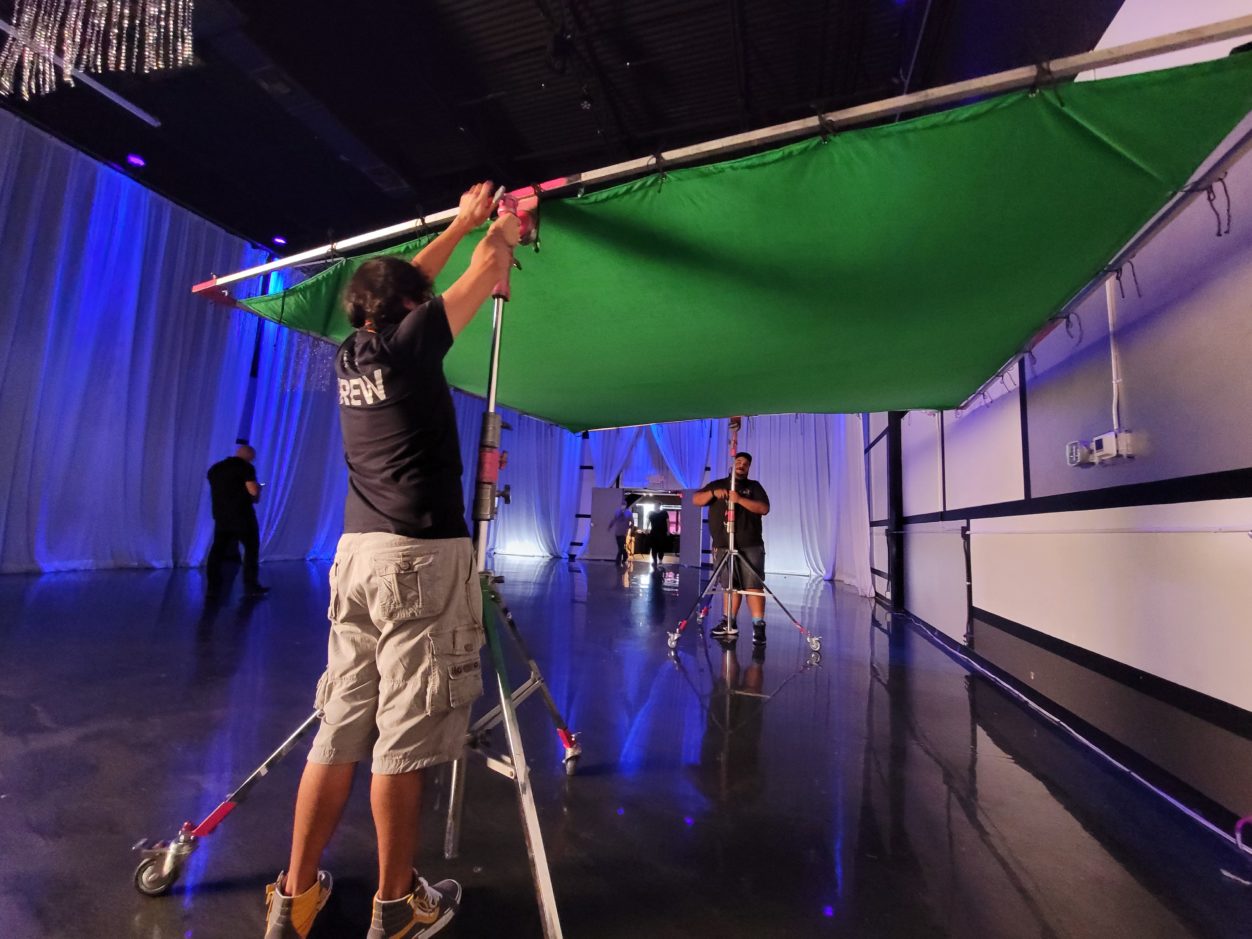
Get a Fast Free estimate!
Building a Core Message
Once you’ve determined why you’re creating a video and who you’re making it for, and have an understanding of how to create a video you can begin to utilize that data, along with your intended objectives to define a core message. Building a core message for your video requires a bit of forward-thinking in regard to what steps you want your audience to take after they watch your video.
Do you want them to:
- Click a link.
- Call a phone number.
- Purchase a product.
- Book a meeting.
- Subscribe to your Youtube channel.
- Take some other action.
Remember, when creating content, sometimes you have to just tell your audience what it is you expect from them! This is called a Call-to-Action. The next step that you expect the viewer to take after watching the video is something that only YOU can decide upfront — but it must be figured out in pre-production planning as this becomes the basis for your core message!
Defining Your Video Strategy
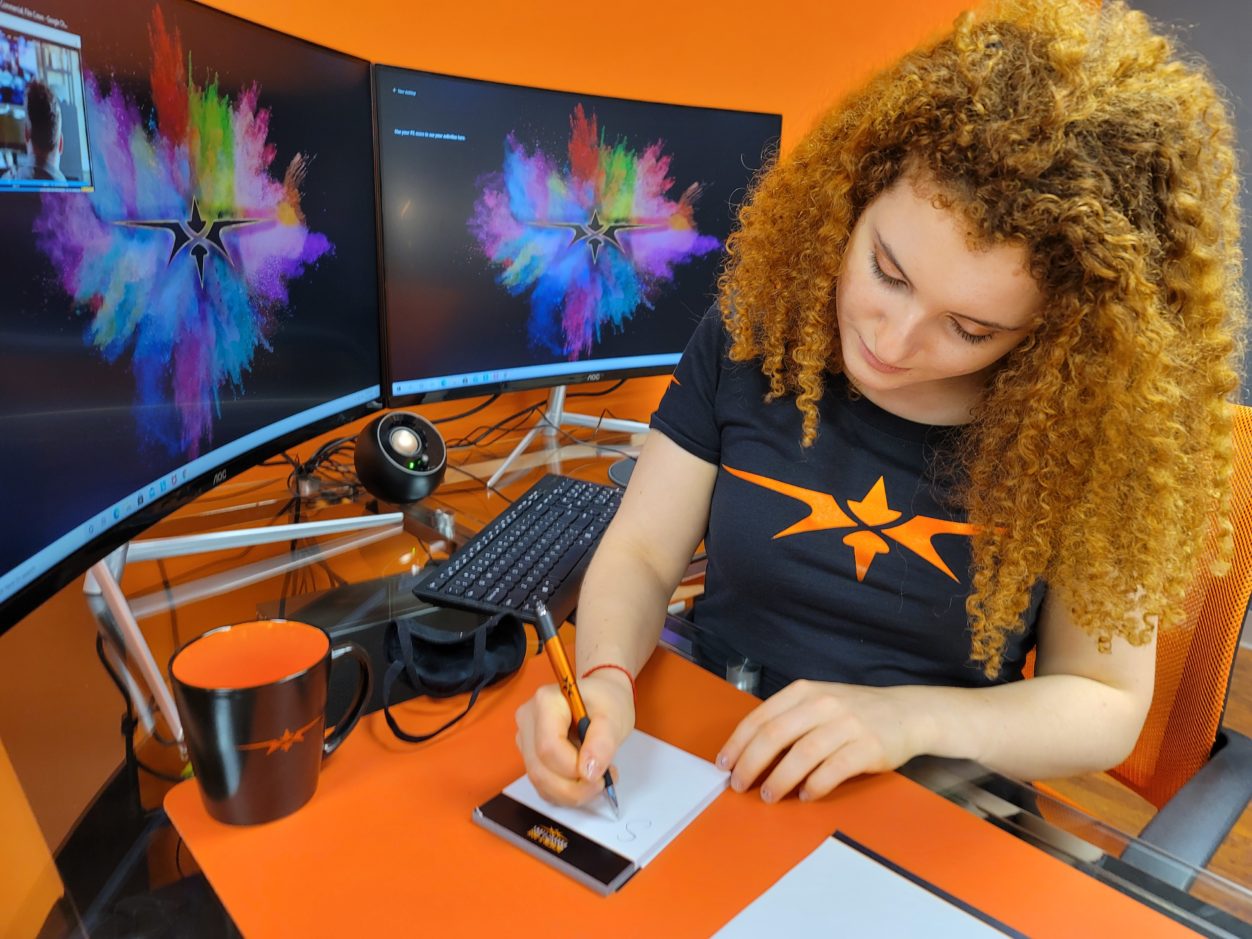
Pre-production is all about strategizing! Defining your video strategy is a vital element to the overall success of your project. Each element of the production process will reflect your strategy as you make decisions regarding your video logistics and the individual topics of the budget, deadline, and how your video is used later on.
Your video strategy should be considered in each major logistics decision that you make along the way including:
- What steps will you take to ensure that your video remains within your pre-planned budget? (Now is NOT a good time to state that you don’t have a budget in mind!)
- What steps will you take to ensure that your video is created within the deadline? (Again, now is NOT a good time to state that you don’t have a deadline for completion in mind!)
- How will your video be used and/or repurposed to maximize your ROI?
Your video strategy is likely to evolve and grow with your video production project over time.
Producer’s NOTE: Don’t worry about getting everything right from the start, instead, focus on defining a clear path and strategy that represents your ability to produce video content in a sustainable manner while staying within your budget, completing video projects on time, and achieving a positive ROI long-term.
Creating a Video Production Brief
The video production brief represents a summarized version of your video goals, objectives, audience, and core message. It should also include information regarding your video budget and the deadlines that you have set for production. Your video production brief should also include your SMART goal outline and representation of what a “successful video” looks like for your brand?
Define Your Creative Approach

Once you’ve outlined your creative brief, it’s time to define your creative approach. What kind of concepts will you use to achieve results with your video?
Use your creative brief as well as your own brainstorming or team brainstorm to determine:
- What should be included in your video?
- How products, services, or other topics will be presented in your video.
- Creative steps that must take place to make the video engaging so that it will stand out against the competition.
This is a great time to draw inspiration from other competitors or sources that have created similar video content or have otherwise worked to produce content that achieves the desired result. Review video content that you believe is powerful and effective within your target audience, take notes, and draw inspiration from these projects. Seeing how others were able to succeed with their projects can share some insight on how to create a video for your brand.
As you gather all of this data and outline the key concepts, topics, and requirements for an effective video you’ll soon have your creative approach defined. Next, you can move onto writing a script.
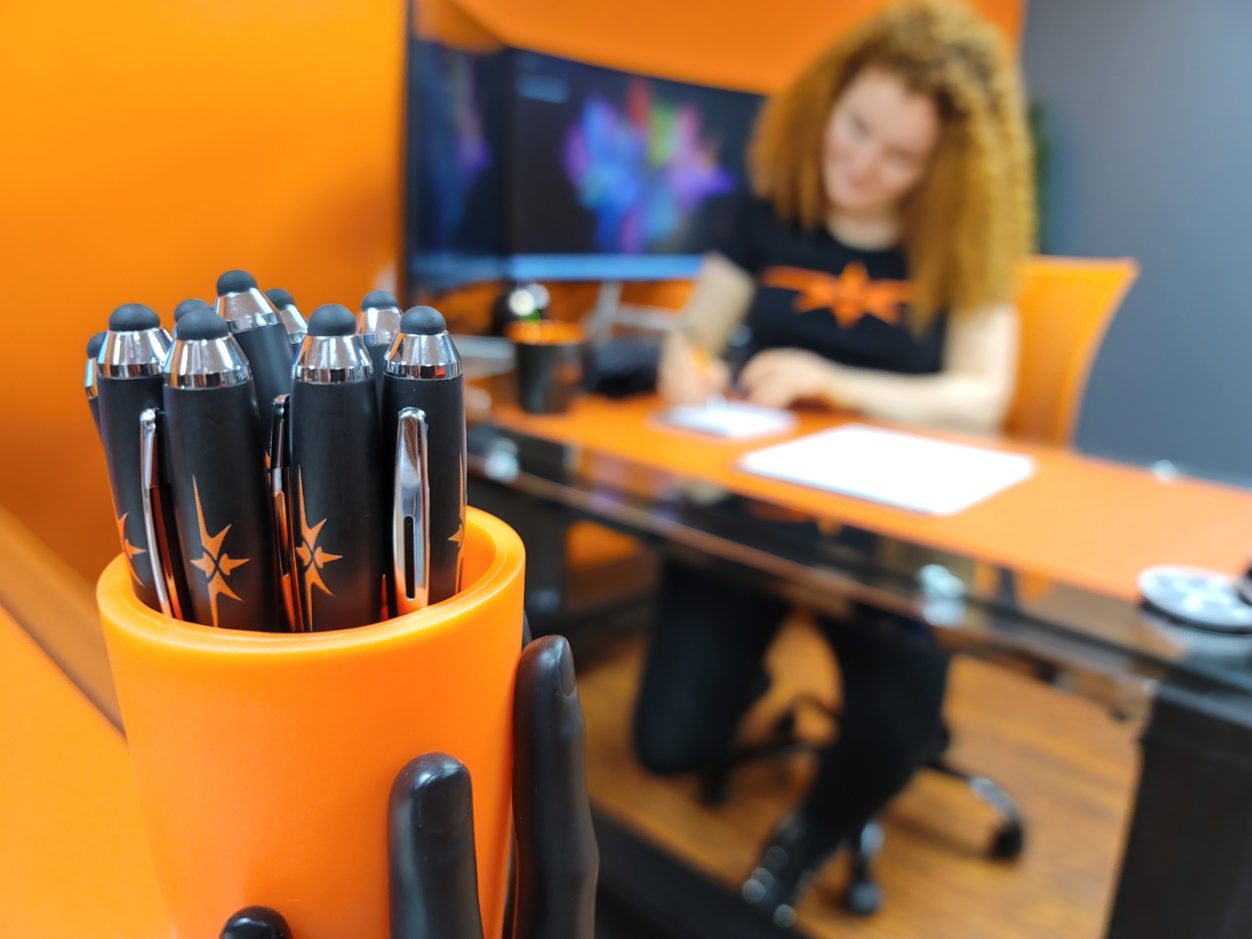
Get a free estimate!
Write Your Video Script
Scriptwriting is an art and a science. It requires the compilation of both your video strategy and your creative approach as well as influence from key competitors and the grounding core message that you’ve developed for your video project.
As you write your script, consider first the actors or presenters that will make up the primary and secondary roles within your video. Think about how your script will support your talent and try to write the script in a style and tone of voice that connects with your audience. If you’ve already hired talent to work as the lead actors or presenters in your video, consider getting them involved in the scriptwriting process to ensure that the script is aligned with the core talent tone of voice.
An engaging script that delivers a neutral, easy to understand the concept is important. Your target audience will be expecting clear, concise verbiage that isn’t overly wordy or long. Get to the point and avoid redundancy.
When writing the script, you may also consider mapping out essential ideas regarding the actions taking place within the story or locations in which the story will take place. Consider working these details into your scriptwriting so that the next stage of the process, creating the storyboard, is more manageable.
Draw Your Storyboard
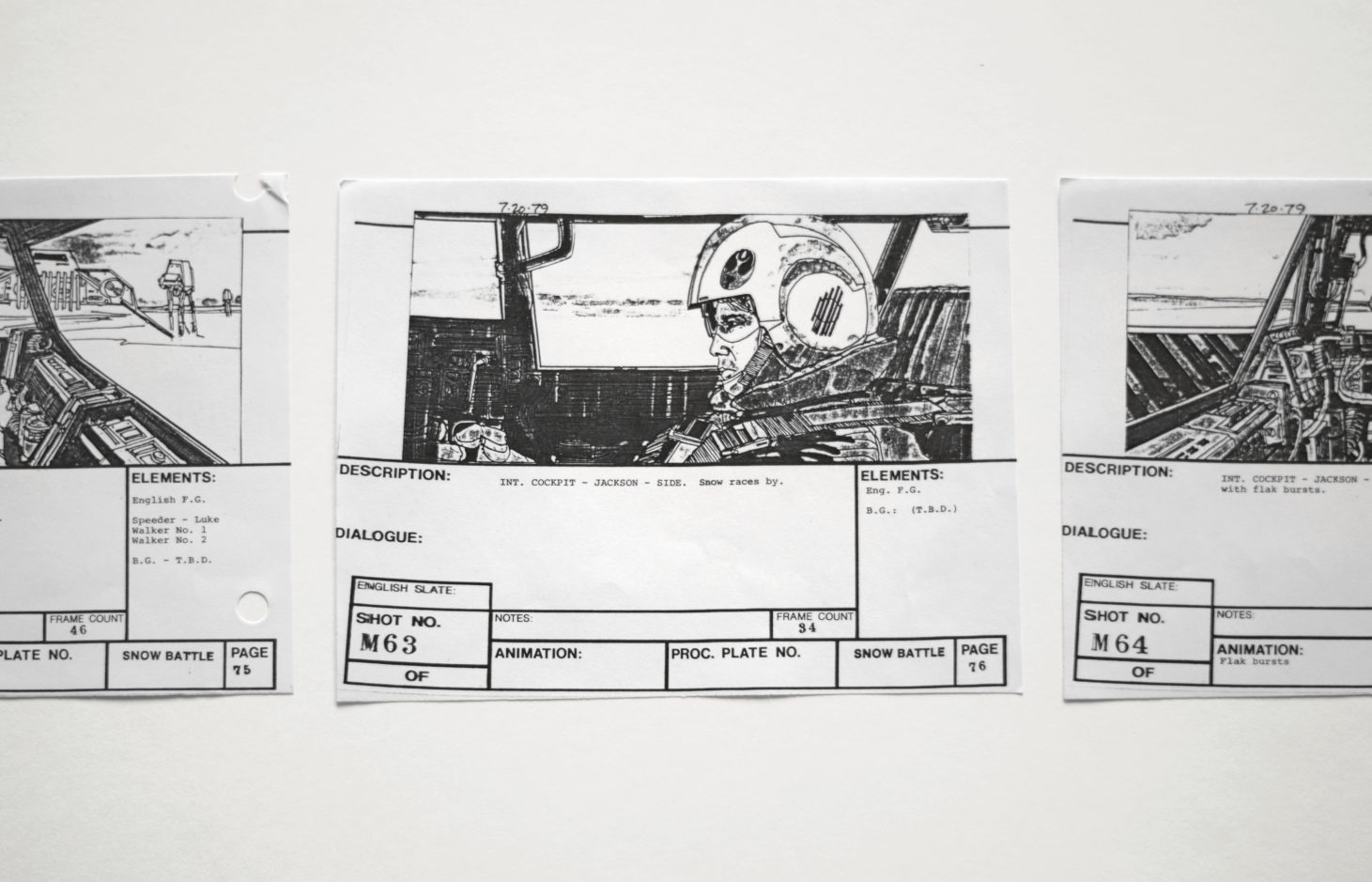
Video storyboards are produced in the pre-production phase to supply visual evidence of each shot and scene that you plan out. Producing a storyboard represents a key means of planning the resources you’ll need to animate your footage. For example, the storyboard will be used to illustrate your ideas for character movements, scene changes, and other visual goals for your script.
Use your storyboard to produce a detailed guide of each shot including what characters will be included in the shot, how and where they will move, and the appropriate camera angles involved in producing the shot. Using the storyboard to visualize these tasks and goals allows you to see where changes or adjustments might make sense before you place resources, time requirements, and commitments on the film set.
There are entire guides on how to draw a storyboard. You can be highly sophisticated with it and hire a storyboard artist or you can choose a simplistic route and sketch stick figures and shapes to get the main idea across — the choice is really yours at this stage in the process. Do what works best for you to produce the plan for the essential shots that will be included in your video.
Consider the following:
- Essential characters for each shot.
- Coloring and framing of each shot.
- What the lighting is like.
- What camera angles or movements will be included.
Location Scouting
The next pre-production step is to scout out the essential locations that the shoot will take place in. If you’re filming an animated video or a motion graphic video, you’ll shoot in a studio — and skip the location scouting step. However, all live-action videos (even testimonials) will require a place to shoot.
Any location scout will tell you the importance of shooting in an area that is quiet, free from distractions, and representative of the underlying needs of your film. Many videos are shot inside an office or quiet room, just pay close attention to background noises like the air conditioner or a telephone ringing as these can interrupt your footage.
Intricate, live-action films, often have a location scout that will seek out prime locations for the shoot or several shoots to take place. Keep in mind that you may require a film permit to shoot outside — be prepared to seek proper permission ahead of time.

Plan Essential Video Equipment
The equipment that you’ll require to shoot your film is another pre-production planning step that you must prepare for. You’ll likely require a video camera, and a microphone as well as the necessary lighting for your footage. If shooting in a studio, some of this may be included or accounted for but when shooting on location you should expect to bring the most essential equipment to the shoot with you.
Now is also the time to determine whether you will need things like:
- A generator
- Extra lighting
- Heating or air conditioning
- Computer monitors
- Essential background graphics
Your storyboard and shot list is a clear representation of what you should include in your equipment list. Use the storyboard to help you plan this essential list of equipment for your budgeting and resource planning needs.
Begin Casting Talent
You’ve defined the goals and objectives as well as the essential script with characters and all of the shots that you intend to create on shoot day, now it’s time to cast talent. You should have a solid idea of who you need to act in your film.
Casting talent is about more than just choosing someone to act out parts. What about a voice-over or narrator? What type of tone or style are you looking for? Do you know someone that may fill a part or role in your film? Have you heard someone personally speak in a voice that would reflect well to your audience?
If you’re outsourcing the voice-over or other talent, consider your options with freelancers or other talented artists. Hiring essential talent is a must — this will be a key factor in the later success of your video. Be sure to consider on-screen talent too! Professional casting can take some time and getting used to. You may need to post ads or otherwise hold casting calls or auditions to gather essential talent for your production.

Scheduling the Film Shoot
You’ve taken all this time in pre-production to formulate a plan for your video. Now it’s time to schedule the shoot. You want to make sure that your shoot day is organized in a way that allows you to maximize your resources and be most efficient because time is money on the film set!
Consider the distance between shoot locations in your planning. Also, make sure that you have worked out details on your talent’s availability on shoot day — you certainly don’t want to schedule a shoot at a time when you lead character is unavailable or has a prior appointment.
As you plan, make sure that you are coordinating your cast, crew, equipment, talent, makeup, hair, wardrobe, and all other essential needs upfront. Lock the date and time with them to ensure your shoot day is a success!
Producer’s NOTE: This is the stage at which many decide to hire a Producer! The producer can help you to manage all of the essential working parts that come into play when scheduling your film shoot. Don’t be afraid to seek support!
Production
The most challenging point of the process is done! Not it’s time to work into the production phase. This is where you will film your video and use all of those planning tools that you created in pre-production, including your storyboard and shot list, and schedule, to make the entire film come to life.
You’ve mapped out a schedule that takes into account each of your key characters, talent roles, and needs. You might have even hired a producer to help you make sure that your film shoot is on schedule and most efficient.
During production, you’ll need a director. This individual will be in charge of monitoring talent and their actions to deliver a performance that adheres to the core message & delivers essential shots in a way that your storyboard and planning reflect. This is where it all comes together.
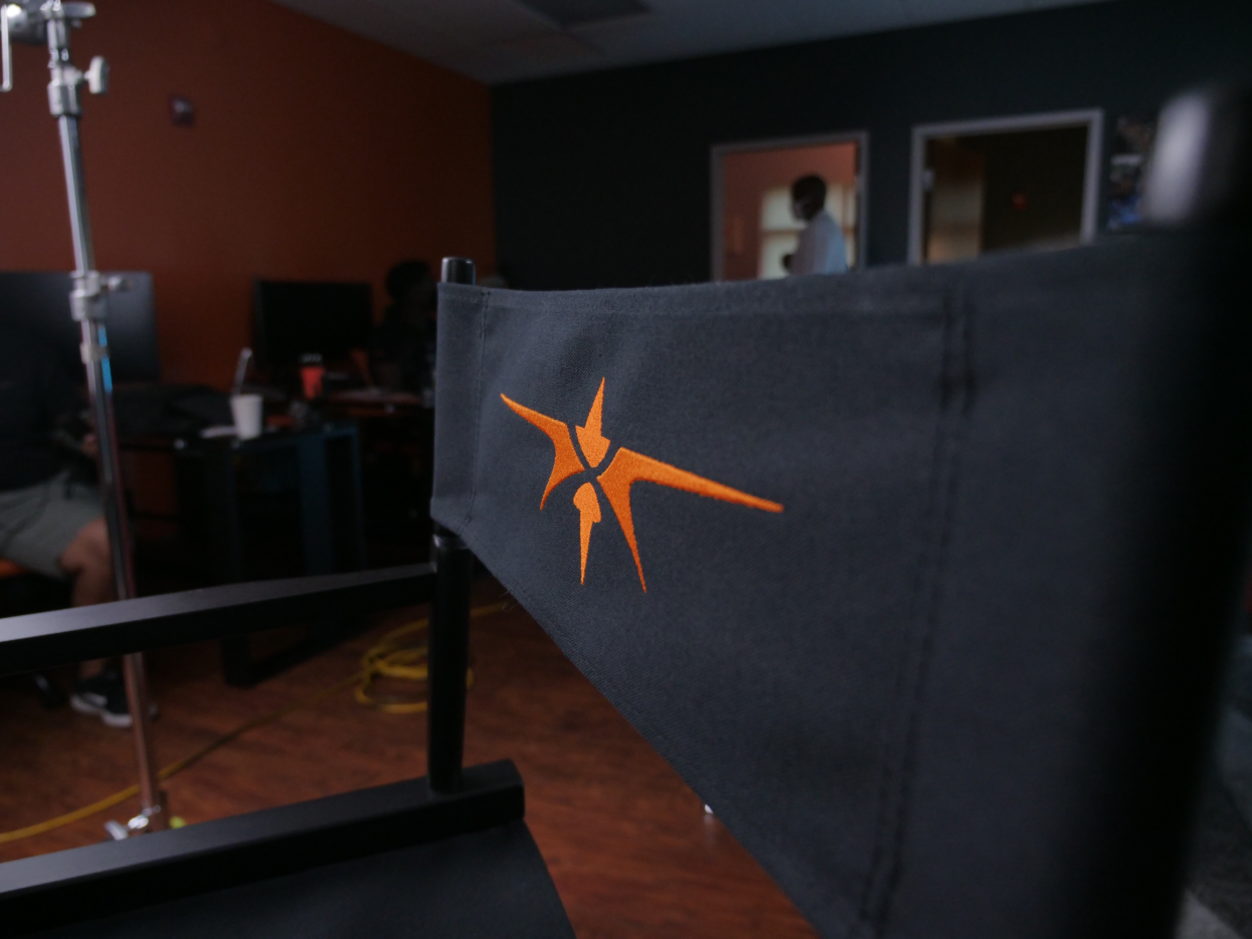
Lights
You may have a Grip or a light crew that comes in ahead of the shoot to set the lighting for your shoot. Your film schedule should have factored in necessary setup times for these essential players in your production. The amount of time that is spent setting up lighting for your shoot is largely dependent upon the shoot location, individual shoot needs, and the lighting that you have chosen as well as the number of shots that will be achieved during each film day.
Camera
Your film crew is prepared with the shot list and storyboard that you created in pre-production. They know what is expected of them, and they are prepared to shoot each scene and shot as directed. The amount of time that is spent setting up cameras and tripods or other essential gear at this point is again, dependent upon the individual shoot needs, the equipment being used, and the professionals involved. Consider all of these factors when scheduling your shoot to ensure enough time for your crew to set up, and breakdown equipment in between shoots.
Action
The Director will work closely with talent on set to capture the key shots and actions on film. Their main goal is to ensure that your talent is delivering the appropriate footage for your video in a way that aligns with the goals, objectives, and plans that you produced — as well as that it aligns with your audience and will appease their desires. In the end, a great video is the sum of all of these working parts coming together on shoot day!
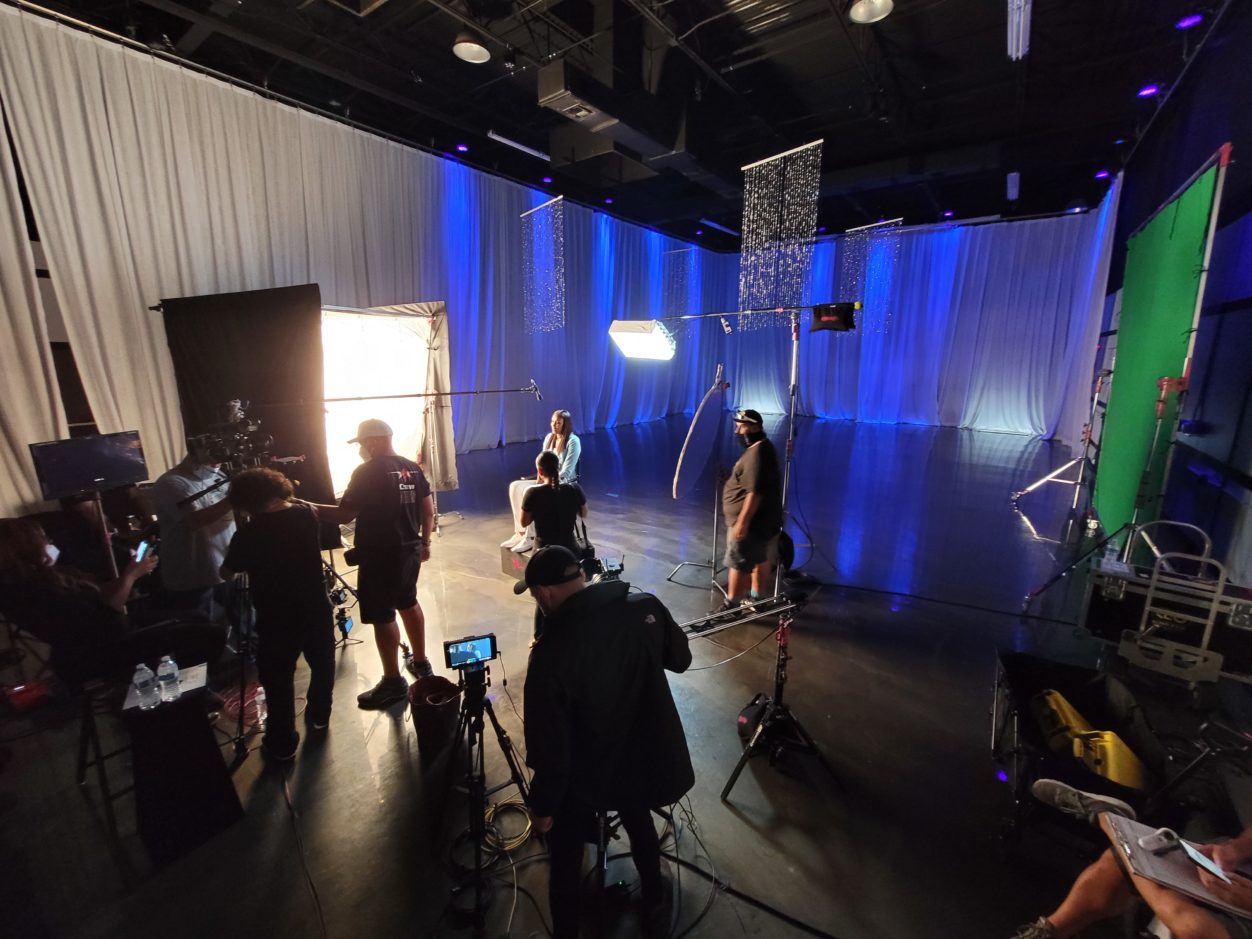
Capturing B-Roll
After the main shots have been captured, the camera crew will spend some time capturing b-roll footage. B-roll will make up about 10% of your footage and is used in editing to cut away to as well as to fill in during certain scenes. Depending on the style of your video, the b-roll footage could include various shots of your film location from random angles, it may include various images or shots of your working talent, and it may include details relative to the overall theme of your video.
Post-Production
Once all of the footage has been captured, you’ll roll into the final stage of producing your video — post-production. During post-production, all of your footage is organized, formatted together, and cut down to produce a finished video that is the desired final length of your film. During this final editing stage, the voiceover or narration is added, the video passes through coloring to ensure every shot is seamlessly connected and any music or special effects are added.
Video Editing
Editing your video requires steps several steps. The editor will review shots and choose the best takes for each scene. These are imported using essential video editing software.
Clips can best be managed by cutting them down so that only the most essential footage is included. This footage is then included in a timeline that can be organized so that any needs for additional b-roll footage are visualized. The editor will work scene by scene, through your script, and alongside your storyboard to put the footage in order.
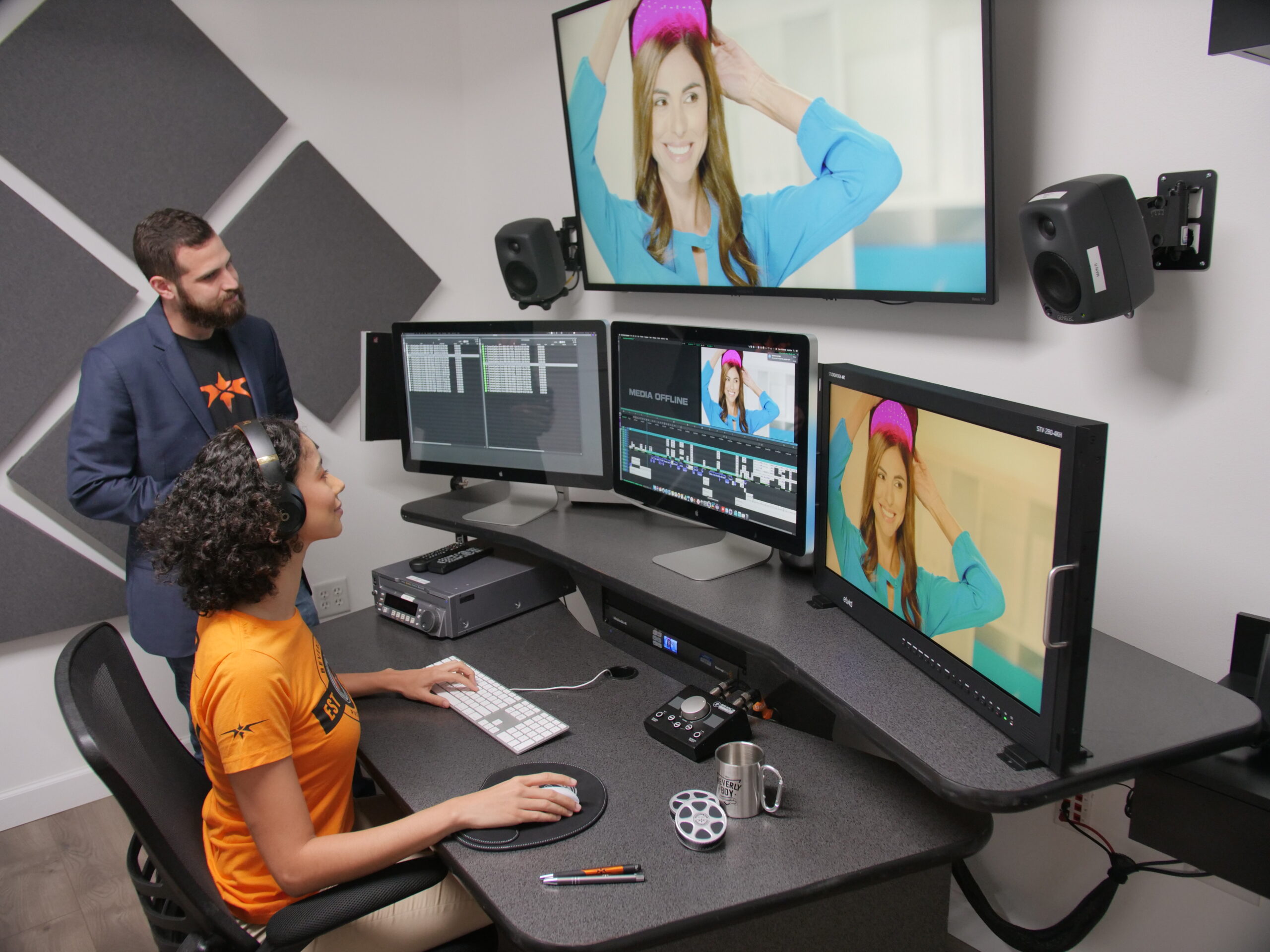
Voiceover Recording
If your video will include a voiceover, you should have cast talent for this during the pre-production planning. Voiceover talent will work be something that you want to closely connect with your target audience. Recording your voiceover is the first step. Then the voiceover can be inserted into the editing timeline in the appropriate areas of your video. This is called syncing.
Graphics & Animations
Once the voiceover has been added in your editing team will work to include graphics and animations in your video. The process can be simple or very advanced and intricate depending on the individual needs of your video and the overall goals. The use of animations will help your audience to visualize key ideas or points in your video. You may consider reserving graphics and animations for parts where you wish to include the greatest emphasis.
Special effects are also included at this time. The effects are largely responsible for bringing an average video to the next level. Consider the use of special effects to engage and entertain your audience.
Get a quick quote now!
Color Grading
The later stages of video editing include color grading, a process in which your editing team will use software such as Adobe Premiere Pro or other more sophisticated measures to add or adjust lighting and color of your shot and scene on a scene-by-scene basis. The purpose of coloring is to reinforce your visual brand, improve the visual identity of your video, and add a futuristic appeal while ensuring consistency in the color of your footage from each take.
Music & Sounds
The addition of music or sounds is the final editing process that your video will go through. You will be surprised at the level of value that comes when your video goes through the final process of adding music and sound. Whether a simple background noise or the use of audio files to engage your audience, this is where the final pieces of your video come together.
The editor will create music tracks or layers of sound to help your audience feel the progression of the story and connect further or more deeply with your content. A sound artist works to create tones and clips that will compliment your footage and add variety and value to your core message. These sounds are edited to align and sync with the overall pace of your footage.

Video Distribution
Once your video has been rendered into the format that you require you can begin to distribute it. Your video editing team will ask you about formatting and requirements. If your video will be shared on social media, such as Youtube, Linkedin, or Twitter, an mp4 will likely be shared with you for distribution. Much of this is determined in the planning phase. Knowing how to create a video is also knowing what to do with it!
Once you distribute your video you can initiate any analytics and appropriate tracking to measure the success of your video. Remember the SMART goals you set early on in pre-production? Now is the time to measure analytics and determine how effective and successful your video is. Consider the following:
- Google Analytics to track video views on your website.
- Youtube Analytics to track video views on Youtube.
- Measuring video performance against individual ROI goals.
- Measuring click-through rates to determine in-video link clicks.
- Tracking phone number calls to determine the effectiveness of individual video calls to action regarding calls.
Promoting your video will help you to gain higher value from your distribution efforts. Consider sharing your video on the social platforms and networks that are most appropriate to your target audience. Ask industry influencers or those that your target audience is most influenced by to shared your video or to promote it for you.
Over time, the promotion of your video should help you to build additional ROI from your efforts. You may even consider repurposing your video to be shared or posted in other ways to further increase viewer results and boost your ROI.
Ready to Hire a Videographer?
Give Beverly Boy Productions a call to learn more about the steps required on ” How to Create a Video. ” Our professional videography team has more than two decades of experience in producing professional videos for a wide range of industries and verticals. We can’t wait to assist you!
Here are 7 reasons to hire Team Beverly Boy for your video project.
Book Your Videographer here!
Did you learn something new? or were you simply curious about how to create a video? let us know in the comments below!

